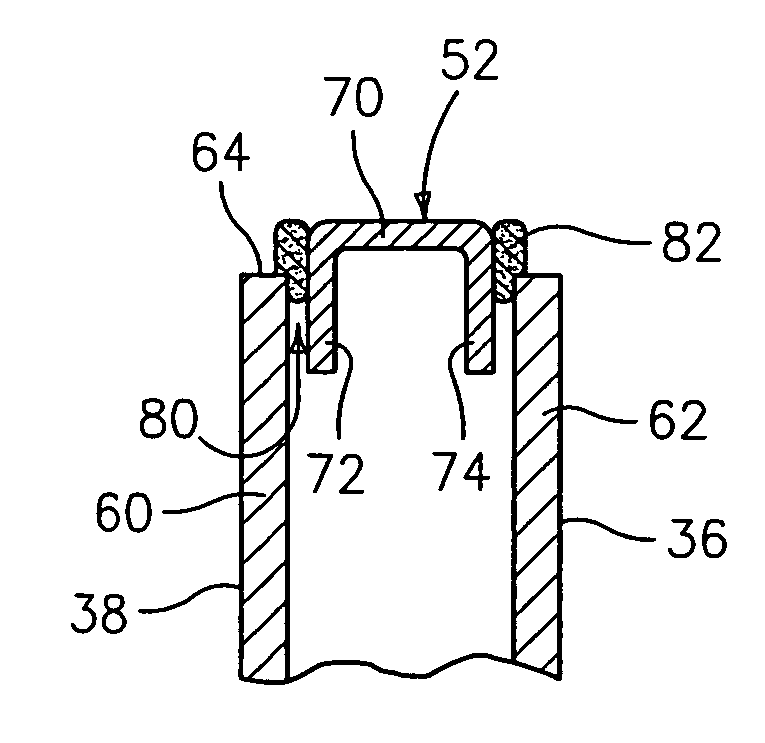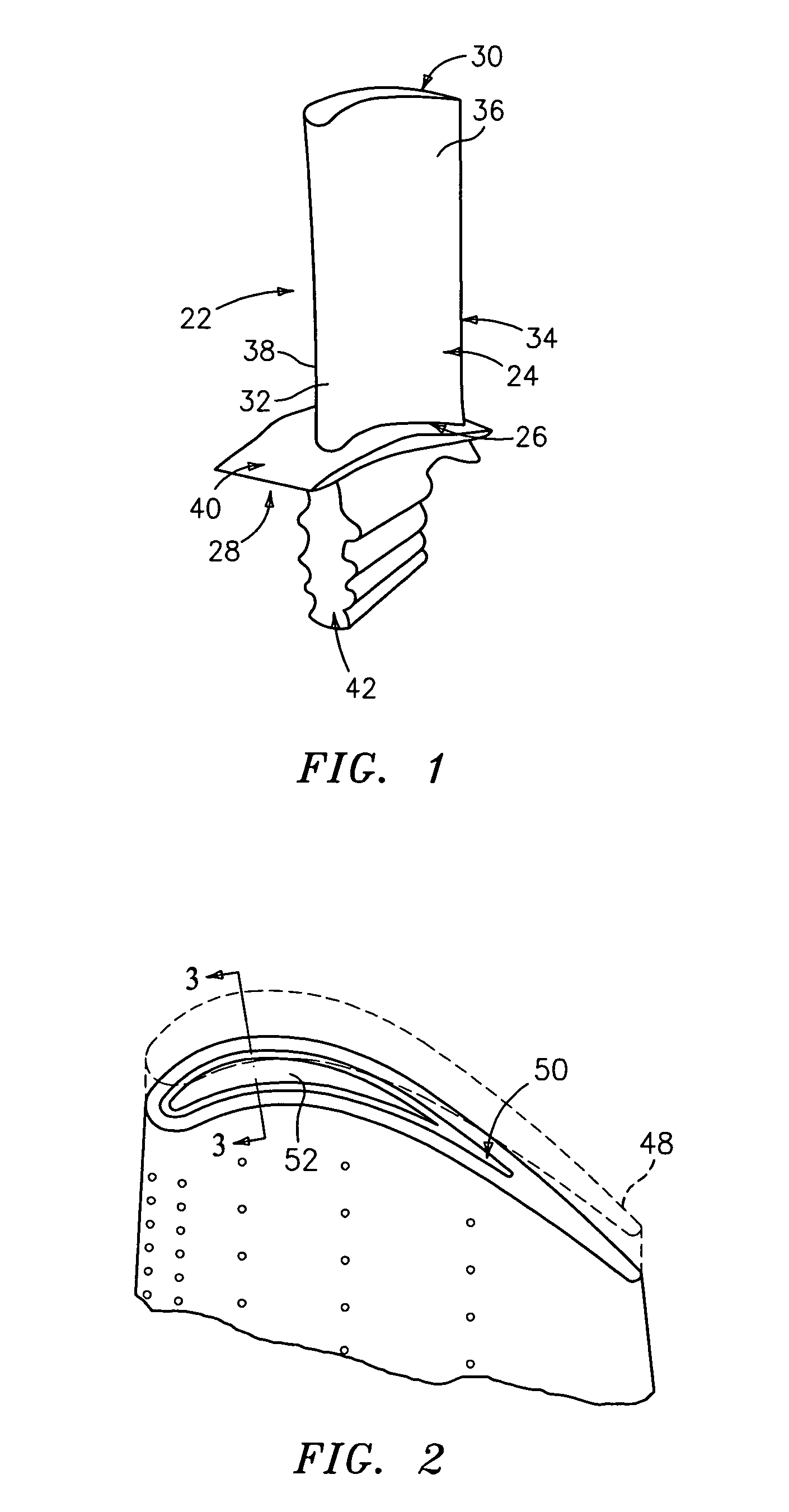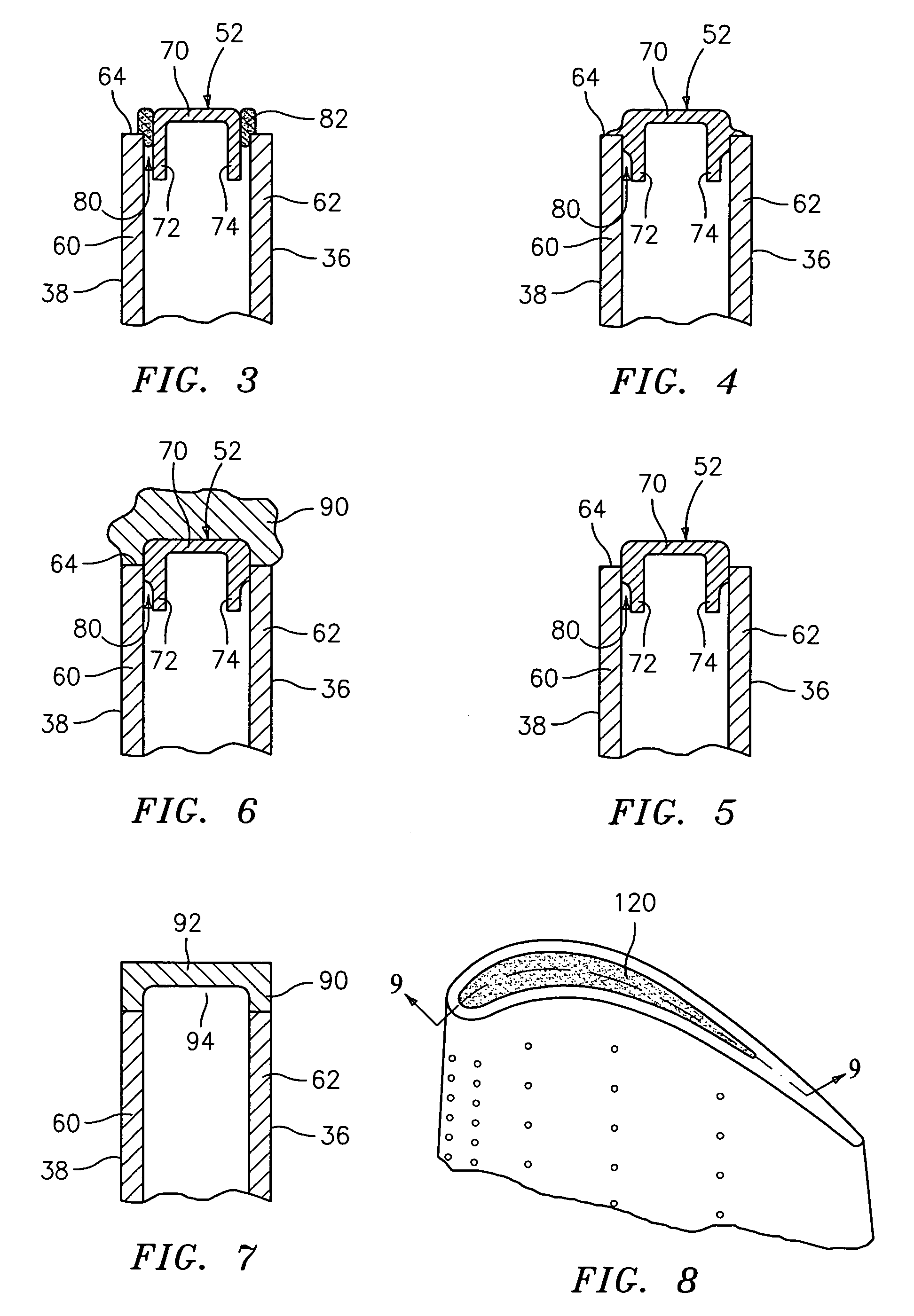Superalloy repair methods
a superalloy and repair method technology, applied in the direction of manufacturing tools, welding/cutting media/materials, welding apparatus, etc., can solve the problems of thermal-mechanical fatigue, interference with the optimal operation of the engine, and wear and damage of the components of the gas turbine engine, so as to increase the resistance to thermal-mechanical fatigue
- Summary
- Abstract
- Description
- Claims
- Application Information
AI Technical Summary
Benefits of technology
Problems solved by technology
Method used
Image
Examples
Embodiment Construction
[0026]FIG. 1 shows a gas turbine element (e.g., a gas turbine engine turbine blade 22). The exemplary blade 22 includes an airfoil 24 extending from a root 26 at a platform 28 to a tip 30. The airfoil has leading and trailing edges 32 and 34 separating pressure and suction sides 36 and 38. The platform 28 has an outboard portion 40 for forming an inboard boundary / wall of a core flowpath through the turbine engine. A mounting portion or blade root 42 depends centrally from the underside of the platform 28 for fixing the blade in a disk of the turbine engine. Optionally, all or some portion (e.g., the platform 28 and airfoil 24) may be coated. A cooling passageway network (not shown in FIG. 1) may extend through the blade from one or more inlets in the root to multiple outlets along the blade sides, edges, tip, and / or root. Exemplary blades may be made from nickel- or cobalt-based superalloys.
[0027] Various portions of the blade or other component may be subject to various kinds of d...
PUM
| Property | Measurement | Unit |
|---|---|---|
| Percent by mass | aaaaa | aaaaa |
| Percent by mass | aaaaa | aaaaa |
| Percent by mass | aaaaa | aaaaa |
Abstract
Description
Claims
Application Information
 Login to View More
Login to View More - R&D
- Intellectual Property
- Life Sciences
- Materials
- Tech Scout
- Unparalleled Data Quality
- Higher Quality Content
- 60% Fewer Hallucinations
Browse by: Latest US Patents, China's latest patents, Technical Efficacy Thesaurus, Application Domain, Technology Topic, Popular Technical Reports.
© 2025 PatSnap. All rights reserved.Legal|Privacy policy|Modern Slavery Act Transparency Statement|Sitemap|About US| Contact US: help@patsnap.com



